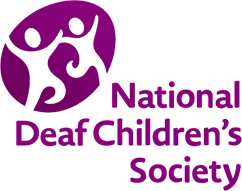You are here:
- Home >
- Get involved >
- Become more deaf aware >
- Deaf-friendly communication tips
Deaf-friendly communication tips
Use these helpful tips to engage with deaf children and young people in school, clubs and other social settings to create a deaf-friendly environment for everyone.
Find out how they like to communicate
Every deaf child or young person will have a preferred way of communicating, so find out if they use speech, British Sign Language (BSL) or a mixture of both.
Get their attention
To get a deaf child or young person's attention you can wave, knock a table, or tap their shoulder lightly.
Speak clearly
Speak as you normally would. Speaking slowly or too loudly makes lip-reading much more difficult.
Group conversations can be difficult for a deaf child or young person to follow. Make it easier by asking everyone to take their turn talking and to make a sign if they want to speak next.
Face the person
Make sure that they can see your face clearly when you're talking. Don’t move around while you’re talking as this will make it impossible to hear your voice and lip-read.
Covering your mouth with your hands, eating, chewing gum or smoking can make lip-reading very difficult. It will also muffle any sound you’re making.
Make sure your face is well-lit
Make sure your face is well-lit to make lip-reading easier. Avoid speaking with your back to the window.
Reduce background noise
Hearing aids and cochlear implants help to amplify sounds. This means the person wearing them has to concentrate very hard on your voice to hear it over everything else.
Background noises such as traffic or the radio can make it difficult for them to listen. Block out unnecessary noise by closing windows, doors and turning machines off.
Write things down
If you're struggling to communicate, try writing your message down or texting on your phone. You could also use the 'dictate' option on your phone to transcribe your speech.
Use gestures
Point to what you’re talking about, and don’t be shy about using gestures to support your communication.
For example, if you want to ask someone if they’d like a drink, you can point to your mug or make a drinking motion.
Don't say "I'll tell you later"
Deaf children and young people have told us someone saying “I’ll tell you later” is their absolute pet hate.
They want to be involved just like their peers, so if one method doesn’t work, don’t be scared to improvise.
- Download our Communicating with deaf children A5 flyer (74kb | PDF) or order the resource online
